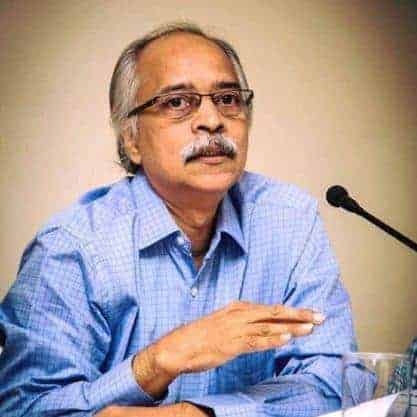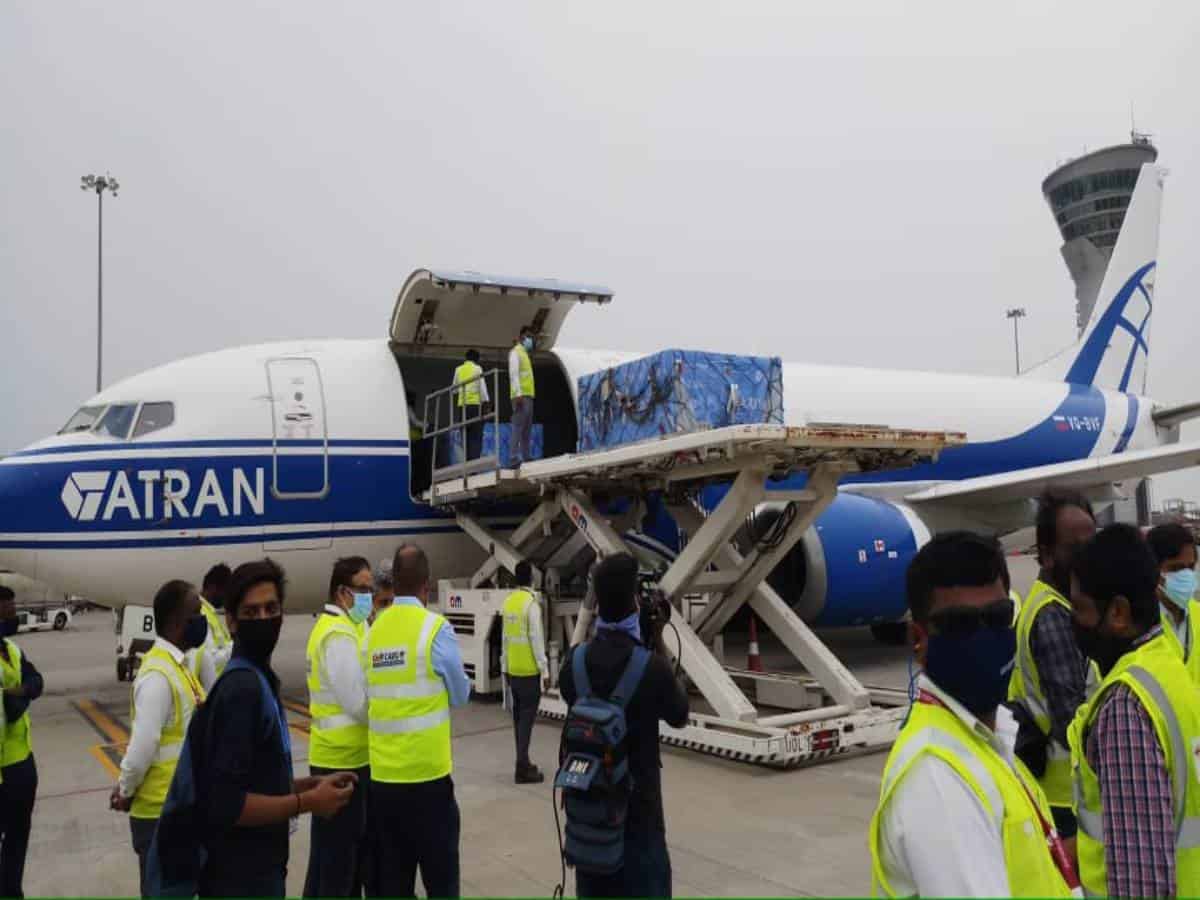
Aircraft’s arriving and departing airports is hardly any news. But, the Russian Aircraft that landed at the Hyderabad International Airport on May one could surely be a history making one indeed.
The landing of the Russian aircraft carrying a load of 150,000 vials of the Sputnik V vaccine coincided with the launch of vaccination for adults between18-44. The Sputnik V has demonstrated efficacy of 91.6 percent in protection against the COVID19.
In a way it symbolically raised the hope of extending the country’s arsenal to fight the huge surge in numbers in the second wave that has pushed it into a health crisis. It also reinforced that Russia continues to be India’s ‘Friend in Need’.
Interestingly, the arrival of the world’s largest cargo aircraft Antonov AN 225 Mireya, weighing 640 tonnes on May 13, 2016 as well as the latest Boeing Dreamliner 787, the biggest passenger aircraft was displayed at the Aviation Show in March 2012 also raised national attention, but it was more of curiosity and demonstration.
Nuclear fuel and Hyderabad
However, the last time that the arrival of an international aircraft raised similar hope and fuel led a national programme was way back in 1983. Coincidentally, it was the summer month of May perhaps, when two wide bodied aircraft from France arrived at the Begumpet Airport to the tightest possible security.
The aircraft brought enriched Uranium, the fuel to run the Tarapur Atomic Power Station (TAPS), built with US help. They were shut as the US and the Nuclear Supply Group, including Canada which greatly helped India in the nuclear energy programme imposing sanctions and cutting off technology and fuel support post the Pokhran Nuclear Explosion of 1974.
The ‘Smiling Buddha’ project under Prime Minister, Indira Gandhi proved costly for India’s nuclear programme. Canada withdrew all nuclear assistance by 1976 and the US decided to not supply fuel to US-supplied reactors in Tarapur unless India accepted full-scope IAEA safeguards.
Interestingly, the reason the French, who replaced the Americans as the fuel supplier to the Tarapur reactors landed in Hyderabad was because of the Nuclear Fuel Complex (NFC). Set up under the Department of Atomic Energy in 1971, it is the main supplier of processed and ready to use fuel in bundled form to the country’s power stations.
Those days, Begumpet had hardly any international connectivity. As a Reporter with the PTI, I got to know from friends in the Airport that these huge foreign aircraft had landed and there was hush, hush silence and secrecy about what they contained. My Science Editor from New Delhi, Dr K S Jayaraman had alerted that the nuclear fuel was to come to NFC.
With no confirmation at the Airport, I rushed to the NFC to meet the Chief Executive, N Kondal Rao. Promptly, the security did not allow. With great difficulty, I managed to connect him on a landline. Rao’s immediate reaction was a ‘No Information can be given’. When, I told him that these huge aircraft were stationed at the Airport that he reluctantly confirmed and shared a few points. I could do a 300 word report on how France had filled in the supply of enriched Uranium to Tarapur after US stopped for nearly a decade with inputs from Dr Jayaraman, who was a nuclear scientist by training.
Interestingly, there is a dedicated railway line from NFC to Begumpet airport to transport the fuel made at the factory plants and transported to different nuclear plants across the country. Also in the COVID-19 pandemic, the railway infrastructure created by the Nizam’s State to the Military and Air Force Station needs is helping in transportation of Oxygen and flying key materials.
The trusted Russians
Coincidentally, it was also in May 1983 that the erstwhile Soviet Union had supplied 131 tons of heavy water to the Rajasthan Atomic Power Station (RAPS) out of the total of 256 tons promised under a September 1976 agreement, despite tough sanctions from the Nuclear nations of the West. Even in the Space sector, the Russians supplied India with 7 cryogenic rockets, despite the ban imposed on the technology by the US. The cryogenic technology is the key to the development of the Geosynchronous Satellite Launch Vehicle (GSLV) that helps place heavier satellites into geostationary orbit.
Coming to vaccines, COVAXIN, the indigenous vaccine developed by the Bharat Biotech, National Institute of Virology and the COVISHIELD, made by Oxford-Astra Zeneca and manufactured by Serum Institute of India (SII), form the two main defences for India at present. The huge rise in cases touching 4 lakh and urgent need to vaccinate has suddenly pushed the country into a vaccine shortage situation from exporter in March, 2021.
The arrival of the Sputnik V will trigger the local manufacture by Dr Reddy’s Labs, the first Indian company to forge a tie up with the RIDF, the supplier from Moscow. At least half a dozen other corporates, including Hetero Biopharma, Virchow Biotech and Gland Pharma from Hyderabad will be able to manufacture about 850 million vials this year.
Sputnik V is the first globally registered vaccine against COVID19.
According to Dr Reddy’s, the company will get a steady supply from May 20. The first consignment will be put through basic functionality tests in cold chain logistics etc. The price of the vaccine is also yet to be fixed. In the International market, it’s priced at $10 per dose.
Meanwhile, the vaccination programme has been severely hampered by supply shortages from both SII and Bharat Biotech. The controversy over pricing issues further deepened the problem. Consequently, the programme to take off on May 1 did so in a few states.
Somasekhar Mulugu, former Associate Editor & Chief of Bureau of The Hindu BusinessLine, is a well-known political, business and science writer and analyst based in Hyderabad

